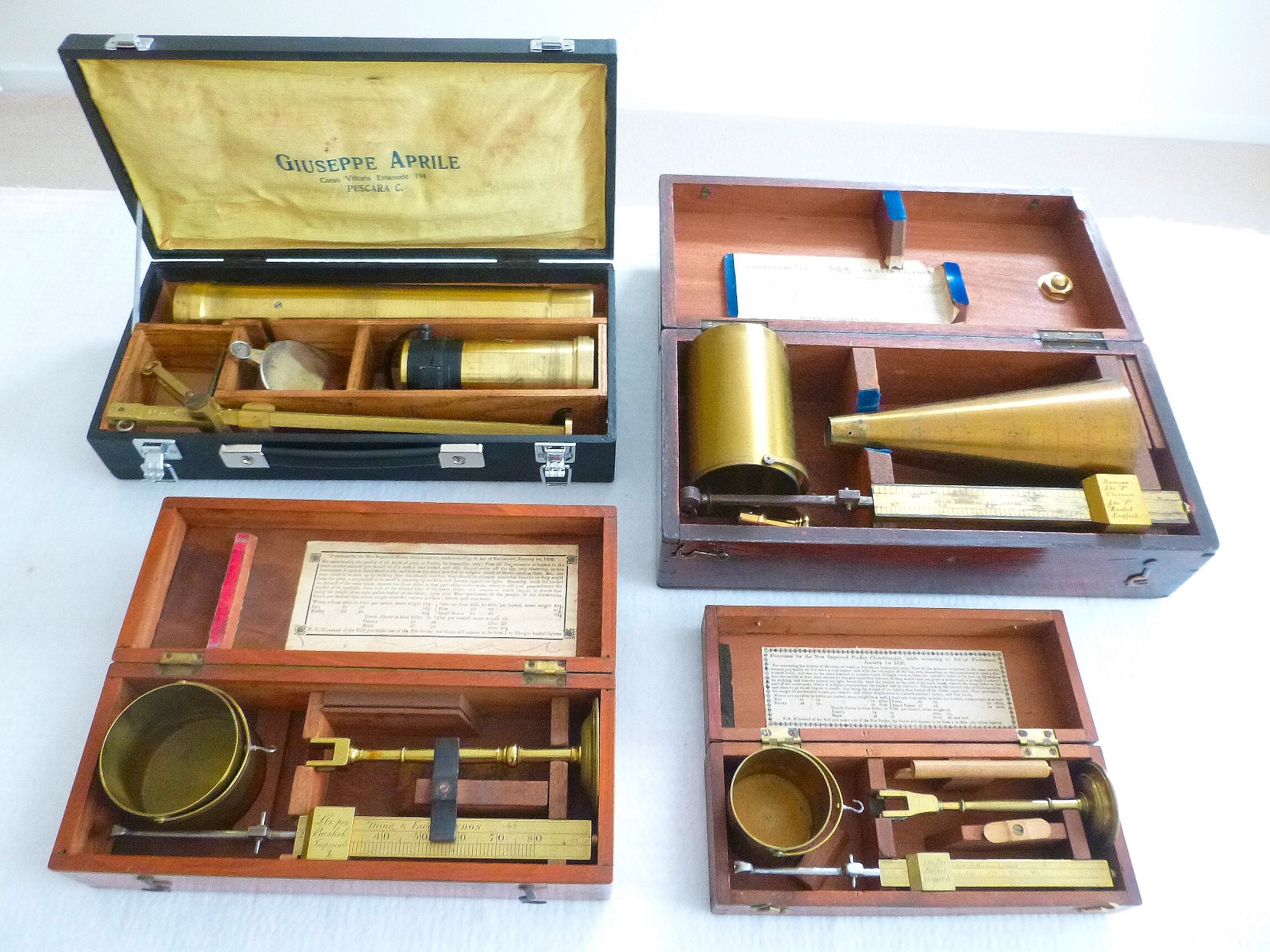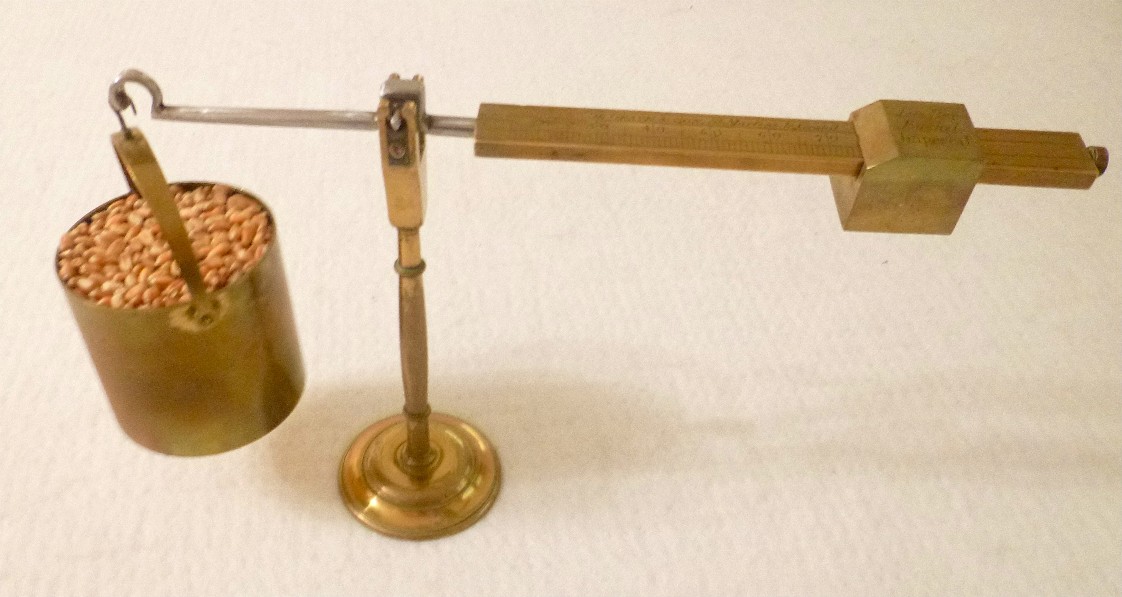|
A chondrometer is a steelyard used to determine the
weight of a bushel of grain, using only a small
sample. ‘Chondro-‘ is said to be derived from the
Latinised form of Greek khondros meaning grain,
hence a chondrometer is a grain measure.
|
 |
Chondrometers were developed in response to the ‘Act
for Ascertaining and Establishing Uniformity of
Weights & Measures’ of 17 June 1824, which came into
force on 1 January 1826. The act, in part, served
to define the Imperial gallon as the standard unit
of volume for liquids and dry goods. With regards
to trading dry goods such as wheat, barley, and oats
the bushel (equal to 8 Imperial
gallons) became the standard unit for buying and
selling purposes. As the quality (density and size)
of cereals can vary, then also the weight for a
given volume can vary. The chondrometer was
developed in order to calculate the weight per
bushel (bushel weight) from a small sample. This
allowed a trader (or miller) to gauge the quality of
the cereal.
|
|
 |
Bushel weight (alternatively referred to as specific
weight or test weight per volume) is a function of
packing efficiency (the percentage of the bulk
volume occupied by the grain) and grain density.
The value is influenced by shrivelled grains, grain
shape, and surface characteristics such as brush
hairs, and surface condition which can be rough or
smooth. A high bushel weight indicates large dense
grains with lots of endosperm in them, which is good
for producing white flour. A low bushel weight
would indicate small thin even shrivelled grains,
with lots of corresponding surface area of bran and
low amounts of endosperm. This would not be ideal
for white flour extraction. |
|
Grain moisture and bushel weight are related in that
as moisture decreases, test weight increases. One
reason why test weight increases as the grain dries
is that dry grain packs together more easily than
wet grains. Additionally, as moisture decreases,
the grains shrink and this allows for more grains to
fill a volume.
Events that may occur during the grain-filling
period of the plant growth will influence the test
weight. Factors that decrease the rate or duration
of grain fill can result in lower test weights at
harvest. Included among these factors are excessive
soil moisture, lack of sunlight, drought, frost,
hail, temperature extremes, nutrient deficiencies,
and insect damage to leaf and stem tissue.
Bushel weight is normally determined after
mechanical cleaning of the wheat has taken place.
Originally in the UK its value was expressed
in pounds
per bushel (lbs/bu), but now more normally
in kilograms per hectolitre (kg/hl).
(1 hl = 100 litres). The
bushel weight for UK wheat is usually in the
range of 74 to 85 kg/hl (NABIM). |
 |

To use the chondrometer (as shown) the value is
obtained by pouring a sample of wheat into the known
volume, which is then levelled off with a wooden
‘strickle’ to remove the excess grain from the top.
This is achieved using zigzag motions of the
strickle. |
|

|
The volume is carefully placed on a scale and the
counterpoise is slid along the scale until balance
is achieved. The test weight is then read off the
scale, which is calibrated in ‘lbs per bushel’. |
|
Later chondrometers have an additional charging
volume (conical or cylindrical in shape) used to
provide uniform packing by filling in a controlled
manner. This is achieved either by opening a valve
or by use of a ‘cutter’. The cutter is a metal
blade (which also replaces the strickle) that can be
slid through the column of grain to isolate the
known volume. The process is shown below.
The known volume can then be weighed as in the
previous manner using the steelyard or nowadays by
using digital scales and converting the weight to
kg/hl with
a conversion chart.
|
|
 |
|
1.Zero (tare) the known volume on digital scales |
2. Insert the cutter bar |
3. Place the charging volume on top |
4. Fill the charging volume with the grain |
|
 |
|
5. Remove the cutter bar to allow the grain to fall
into the known volume |
6. Replace the cutter bar and remove the charging
cylinder |
|
8. Remove the cutter bar and weigh the grain-filled
volume |
